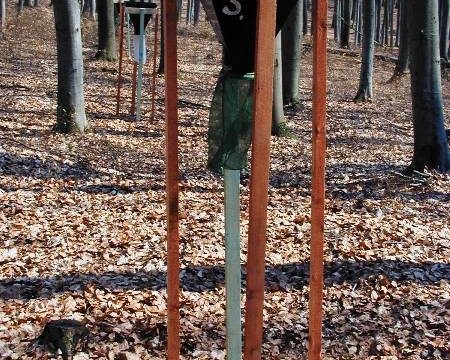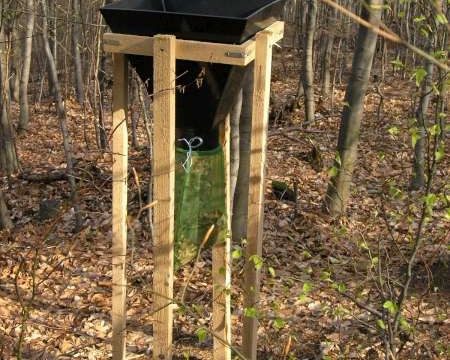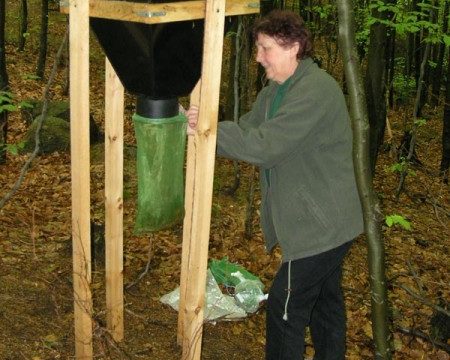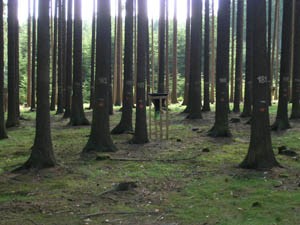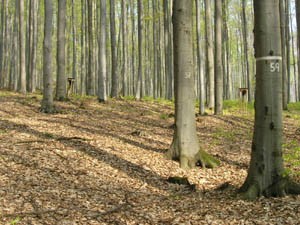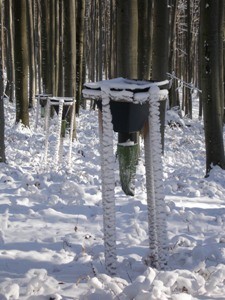Litterfall is the key parameter of bio-chemical circulation, connecting individual parts of the forest ecosystem (tress and soil and water in the ecosystem). Litterfall biomass and its chemical composition (including amount of heavy metals) is necessary, to quantify the year cycling of individual elements and organic matter in the soil. Litter decomposition is the most important process when stating the flow of nutrients and organic matter in the ecosystem and their input in the soil. This strongly affects the soil environment and production of the stands.
The effect of anthropogenic and natural factors and climate changes can be of influence on litterfall amount and seasonal development. Carbon circulation is closely bound mainly to litterfall, and also to leaf area index (LAI) – proportion of the leaf area and area of the stand. Litterfall biomass is one of the parameters in stating of the LAI. This index describes the basic parameters of the crown level and its inter-action with the atmosphere (interception of precipitation water and deposition, sun radiation, gas exchange, evapotranspiration, element leaching from the leaves etc.) and it is also input information of different models.
Changes of litterfall characteristics are affected by tree damage by biotic factors (pests) or abiotic factors of the environment (spring frost, dryness, wind, air pollution, etc.) Production of litterfall is a quantitative characteristic of the stand vitality and it gives supporting information for other investigation in the plot (e.g. health state assessment), it makes possible to show leaf abnormalities, e.g. size and shape of the leaves, biotic damage etc.
Characteristic of litterfall and its amount is also used to assess phenological development of the stand and inter-year changes, flushes, leaf development, flowering and fruiting, leaf and needle fall in connection to the health state of the stand and climatic conditions.
Investigation of litterfall characteristics, amount, components and chemical composition is done in 11 plots (Benešovice, Březka, Medlovice, Klepačka, Lazy, Luisino údolí, Mísečky, Nová Brtnice, Lásenice, Všeteč, Želivka). In each plot 6 litterfall collectors are placed, along the two sites of the monitoring plot, in the buffer zone. Collectors are made of poly-ethylene, shaped as reversed truncated pyramid, with a net-sac for litterfall collection. Collecting area of the trap is 0.25 m2, it is fixed in stall about 1.5 m over ground. Samples of litterfall are taken of each collector in a month interval, in broadleaved stands, in the period of massive leaf fall, more frequently, at least three times per month, together with samples of precipitation and soil water. In the mountain plots of high snow cover, special collectors are being installed in winter period, where the samples are taken only in spring, after the snow had melted. In the lab, the samples are weighed and dried in the room temperature, and than sorted out individual fractions (leaves and needles, little branches, bark, seeds, cones, flowers, buds, animal remnants, others). Mass of individual fractions is stated, and weight of 1000 needles or 100 leaves. Chemical analyses are done in FGMRI accredited laboratory, year mixed samples of individual fractions are analysed. In the samples Ca, Mg, K, Na, P, Al, Fe, Mn, Zn, Ntot, Stot, Cl, dry mass at 105°C are stated. The laboratory regularly participates in the national and international ring tests on analyses of the plant material.

